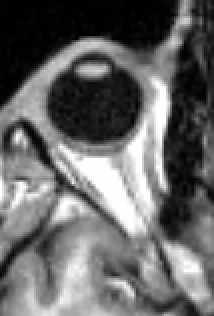Eye muscles
| Extraocular muscles | |
|---|---|

|
|
| Details | |
| Origin | Annulus of Zinn, maxillary and sphenoid bone |
| Insertion | Tarsal plate of upper eyelid, eye |
| Artery |
Ophthalmic artery, lacrimal artery, infraorbital artery, anterior ciliary arteries, superior and inferior orbital veins |
| Nerve | Oculomotor, trochlear and Abducens nerve |
| Actions | See table |
| Identifiers | |
| Latin | Musculi externi bulbi oculi |
| TA | A04.1.01.001 |
| FMA | 71101 |
|
Anatomical terms of muscle
[]
|
|
The extraocular muscles are the six muscles that control movement of the eye and one muscle that controls eyelid elevation (levator palpebrae). The actions of the six muscles responsible for eye movement depend on the position of the eye at the time of muscle contraction.
Since only a small part of the eye called the fovea provides sharp vision, the eye must move to follow a target. Eye movements must be precise and fast. This is seen in scenarios like reading, where the reader must shift gaze constantly. Although under voluntary control, most eye movement is accomplished without conscious effort. Precisely how the integration between voluntary and involuntary control of the eye occurs is a subject of continuing research. It is known, however, that the vestibulo-ocular reflex plays an important role in the involuntary movement of the eye.
The extraocular muscles are supplied mainly by branches of the ophthalmic artery. This is done either directly or indirectly, as in the lateral rectus muscle, via the lacrimal artery, a main branch of the ophthalmic artery. Additional branches of the ophthalmic artery include the ciliary arteries, which branch into the anterior ciliary arteries. Each rectus muscle receives blood from two anterior ciliary arteries, except for the lateral rectus muscle, which receives blood from only one. The exact number and arrangement of these cilary arteries may vary. Branches of the infraorbital artery supply the inferior rectus and inferior oblique muscles.
Below is a table of each of the extraocular muscles and their innervation, origins and insertions, and actions. Note that the muscles may have minor actions in neutral, adduction, or abduction, but the primary action is shown in bold.
Mnemonic for simplified actions:
1. Obliques Abduct whereas Rectii Adduct (except LR)
2. Superiors Intort whereas Inferior Extort
...
Wikipedia
